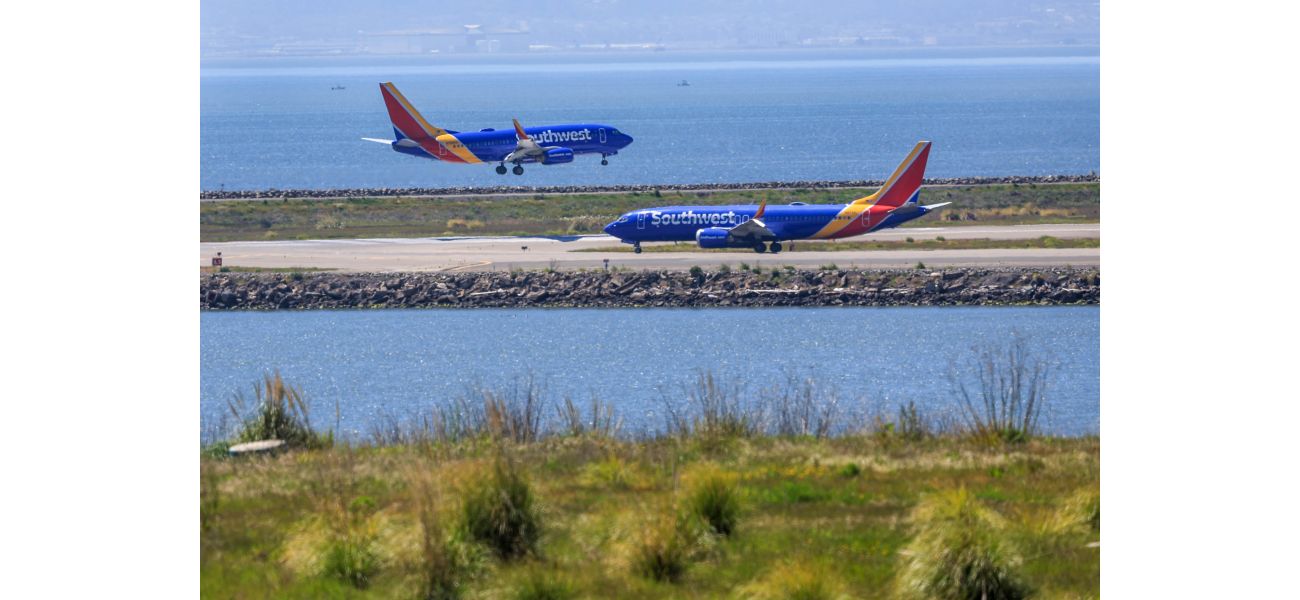Report on Oakland airport expansion released; final environmental impact report now available.
Due to the popularity of virtual meetings on platforms like Zoom, the airport is currently operating at 80% of its pre-pandemic passenger capacity.
October 17th 2024.

On Thursday, the San Francisco Bay Oakland International Airport released its final environmental impact report for its planned expansion project. However, opponents of the project are claiming that the report is flawed and shows a blatant disregard for public health. The report discusses potential changes in air quality, greenhouse gas emissions, noise, health hazards, and traffic that may occur if the airport receives approval to modernize and develop the aging aviation hub over the next six years.
The airport's proposed plans include upgrading its two existing terminals, constructing a new terminal with up to 16 new gates, and updating its facilities to meet industry standards. These changes aim to improve operational efficiency and safety for both passengers and employees. It's worth noting that the airport's physical footprint will not expand under this proposal, but existing facilities may be demolished to make room for the expansion of international arrival areas. Additionally, parking lots and roadways will also undergo renovations.
A draft of the report was released in July 2023, and the final version includes updates such as a revised soil and groundwater assessment, a study on the potential impact on burrowing owls' habitats, and an updated section on noise impacts. The final report also includes a community benefit agreement that will give residents of East Oakland a voice in the project's effects on their community.
Colleen Liang, the director of environmental programs and planning at the Port of Oakland, which oversees the airport, stated that all studies conducted concluded that there would be no significant additional impacts. However, representatives from the leading opposition group, Stop OAK Expansion Coalition, are urging Port of Oakland commissioners to vote against the final report and send it back to the staff for further work. If the report is certified, construction on some components of the project could begin as early as next year.
The coalition, made up of 78 environmental justice, climate, labor, public health, medical, and religious groups, believes that the final report lacks a Health Impact Assessment, which was requested by the Alameda County Public Health Department in a letter to the port last October. According to the coalition, the report instead hired a consulting company to conduct an engineering study disguised as a health risk analysis, ignoring the health department's request.
The health department's letter stated that residents of East Oakland, many of whom live under the airport's flight paths, are hospitalized or taken to an emergency room for asthma at a rate three times higher than those in other parts of Alameda County. Liang, however, stated that the final report does include a human health risk assessment that considered various factors such as cancer risks, health hazards, and emissions exposure from airport operations. She also mentioned that the port consulted with the air district, and the assessment aligns with industry standards and federal guidelines.
The final report also addresses over 1,000 public comments, with a majority focusing on air quality, greenhouse gas emissions, impacts to the Oakland community, and noise. Liang acknowledged and appreciated the comments and stated that they are doing everything in their power to promote zero emissions, with or without the proposed project. The port's goal is to become cleaner and greener at the San Francisco Bay Oakland International Airport.
The project's proponents argue that it will help the airport meet the projected increase in air travel demand over the next two decades, in line with the nationwide trend. However, opponents argue that the supposed demand for expansion is not based on reality. Currently, the airport is operating at about 80% of its pre-pandemic passenger levels due to many business travelers opting for virtual meetings instead of flying. Furthermore, passenger traffic has decreased by 4% between fiscal years 2023 and 2024. Despite this, Liang maintains that the expansion is necessary to accommodate the estimated 25 million passengers the airport expects to serve annually by 2038, which is 14 million more than last year's numbers.
The airport's proposed plans include upgrading its two existing terminals, constructing a new terminal with up to 16 new gates, and updating its facilities to meet industry standards. These changes aim to improve operational efficiency and safety for both passengers and employees. It's worth noting that the airport's physical footprint will not expand under this proposal, but existing facilities may be demolished to make room for the expansion of international arrival areas. Additionally, parking lots and roadways will also undergo renovations.
A draft of the report was released in July 2023, and the final version includes updates such as a revised soil and groundwater assessment, a study on the potential impact on burrowing owls' habitats, and an updated section on noise impacts. The final report also includes a community benefit agreement that will give residents of East Oakland a voice in the project's effects on their community.
Colleen Liang, the director of environmental programs and planning at the Port of Oakland, which oversees the airport, stated that all studies conducted concluded that there would be no significant additional impacts. However, representatives from the leading opposition group, Stop OAK Expansion Coalition, are urging Port of Oakland commissioners to vote against the final report and send it back to the staff for further work. If the report is certified, construction on some components of the project could begin as early as next year.
The coalition, made up of 78 environmental justice, climate, labor, public health, medical, and religious groups, believes that the final report lacks a Health Impact Assessment, which was requested by the Alameda County Public Health Department in a letter to the port last October. According to the coalition, the report instead hired a consulting company to conduct an engineering study disguised as a health risk analysis, ignoring the health department's request.
The health department's letter stated that residents of East Oakland, many of whom live under the airport's flight paths, are hospitalized or taken to an emergency room for asthma at a rate three times higher than those in other parts of Alameda County. Liang, however, stated that the final report does include a human health risk assessment that considered various factors such as cancer risks, health hazards, and emissions exposure from airport operations. She also mentioned that the port consulted with the air district, and the assessment aligns with industry standards and federal guidelines.
The final report also addresses over 1,000 public comments, with a majority focusing on air quality, greenhouse gas emissions, impacts to the Oakland community, and noise. Liang acknowledged and appreciated the comments and stated that they are doing everything in their power to promote zero emissions, with or without the proposed project. The port's goal is to become cleaner and greener at the San Francisco Bay Oakland International Airport.
The project's proponents argue that it will help the airport meet the projected increase in air travel demand over the next two decades, in line with the nationwide trend. However, opponents argue that the supposed demand for expansion is not based on reality. Currently, the airport is operating at about 80% of its pre-pandemic passenger levels due to many business travelers opting for virtual meetings instead of flying. Furthermore, passenger traffic has decreased by 4% between fiscal years 2023 and 2024. Despite this, Liang maintains that the expansion is necessary to accommodate the estimated 25 million passengers the airport expects to serve annually by 2038, which is 14 million more than last year's numbers.
[This article has been trending online recently and has been generated with AI. Your feed is customized.]
[Generative AI is experimental.]
0
0
Submit Comment





